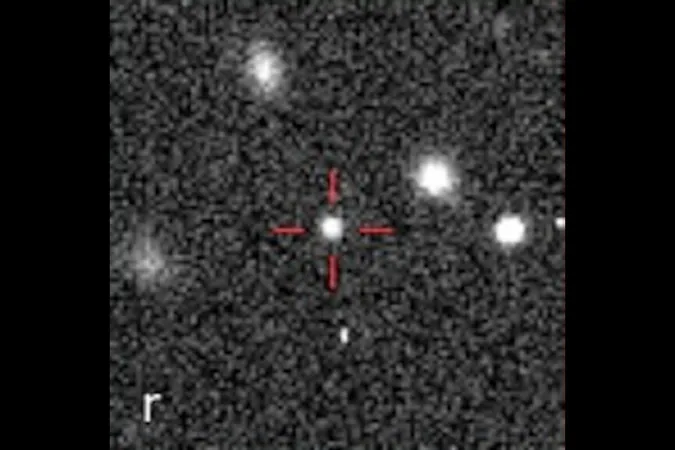
Mind-Blowingly Large Minor Planet Discovered Beyond Pluto: What Does It Mean for Our Solar System?
2025-05-22
Author: Ling
Astronomers have made a groundbreaking discovery in the icy depths of our solar system—a new minor planet, and it's no small fry! This intriguing celestial body, known as 2017 OF201, stands out as one of the largest distant objects ever identified, boasting an orbit that puts our own planet Earth to shame.
With a size ranging from approximately 290 to 510 miles (470 to 820 kilometers) across, 2017 OF201 is comparable to Ceres, the largest asteroid found in the belt between Mars and Jupiter. Ceres measures about 592 miles (952 km) in diameter, illustrating just how significant this new find is.
Led by Sihao Cheng from the Institute for Advanced Study, astronomers initially detected 2017 OF201 through archival images. It has now been officially classified as a trans-Neptunian object (TNO)—these celestial bodies revolve around the Sun beyond the orbit of Neptune, which is already a staggering 30 times farther from the Sun than we are here on Earth.
But don’t be fooled—2017 OF201 is not just another remote TNO. Its orbit stretches out as far as 838 astronomical units (AU) from the Sun, nearly 30 times the distance Neptune travels. At its closest approach, it comes within 45 AU of our star, making it an extreme trans-Neptunian object (ETNO) that could hold the key to understanding the mysterious gravitational dynamics at play in the solar system's farthest reaches.
This discovery inevitably leads to discussions about the elusive Planet Nine, a theorized massive planet that many believe could explain the unusual clustering of objects in the Kuiper Belt. While other hypotheses like a ring of debris or even a primordial black hole have been suggested, the idea of a distant, as-yet-unobserved planet captures our imagination like nothing else. If Planet Nine exists, it would be over six times the mass of Earth, with a mind-boggling orbital period of roughly 7,400 years.
Although 2017 OF201 isn’t the colossal Planet Nine some have speculated about, its discovery serves as a reminder that the solar system is still filled with wonders and surprises. Just last month, another potential candidate for Planet Nine was identified, though it was found in a less-than-ideal location.
With each new finding, astronomers move closer to unraveling the mysteries of our cosmic neighborhood, bringing us one step closer to understanding the intricate dance of celestial bodies that surrounds us.


 Brasil (PT)
Brasil (PT)
 Canada (EN)
Canada (EN)
 Chile (ES)
Chile (ES)
 Česko (CS)
Česko (CS)
 대한민국 (KO)
대한민국 (KO)
 España (ES)
España (ES)
 France (FR)
France (FR)
 Hong Kong (EN)
Hong Kong (EN)
 Italia (IT)
Italia (IT)
 日本 (JA)
日本 (JA)
 Magyarország (HU)
Magyarország (HU)
 Norge (NO)
Norge (NO)
 Polska (PL)
Polska (PL)
 Schweiz (DE)
Schweiz (DE)
 Singapore (EN)
Singapore (EN)
 Sverige (SV)
Sverige (SV)
 Suomi (FI)
Suomi (FI)
 Türkiye (TR)
Türkiye (TR)
 الإمارات العربية المتحدة (AR)
الإمارات العربية المتحدة (AR)